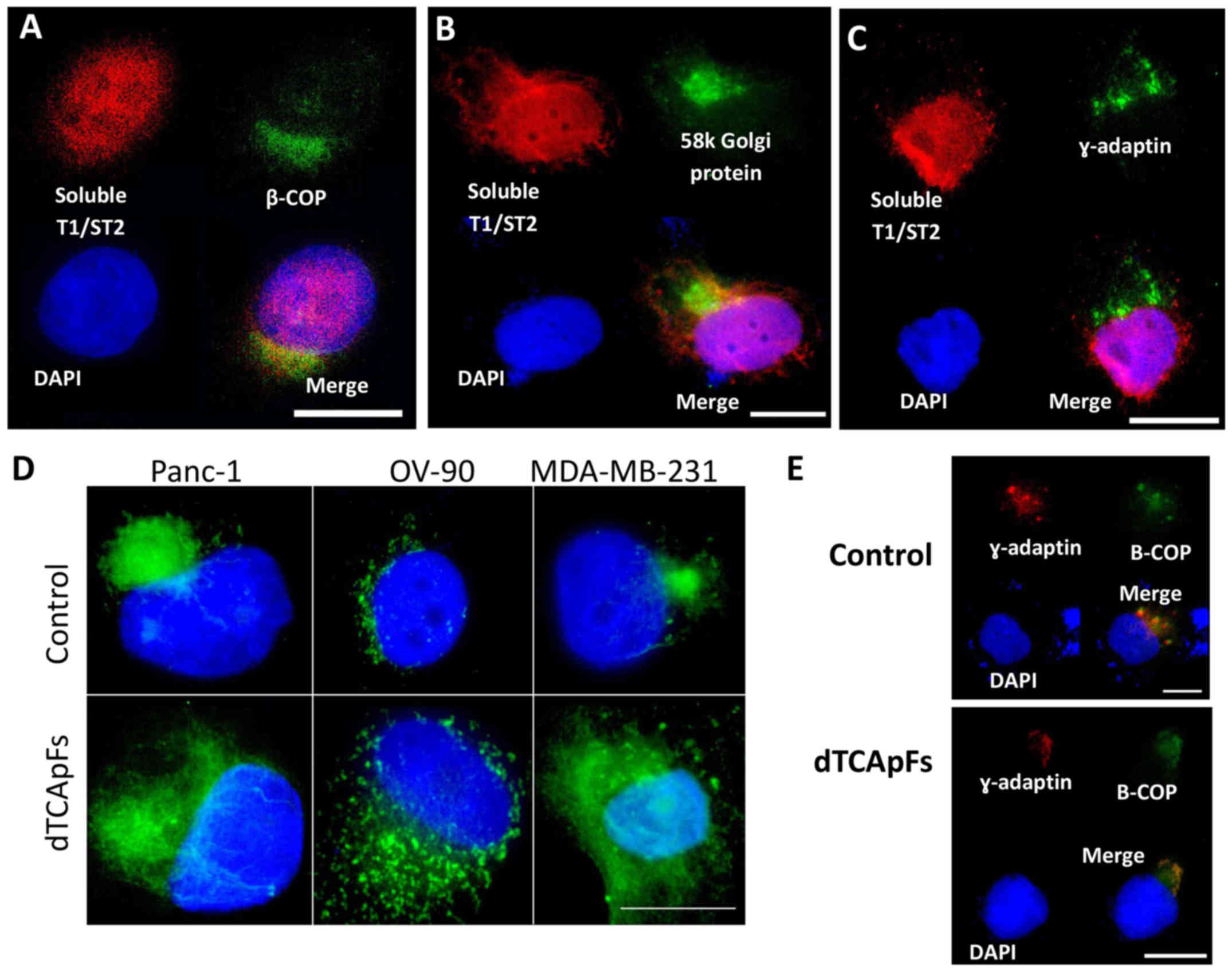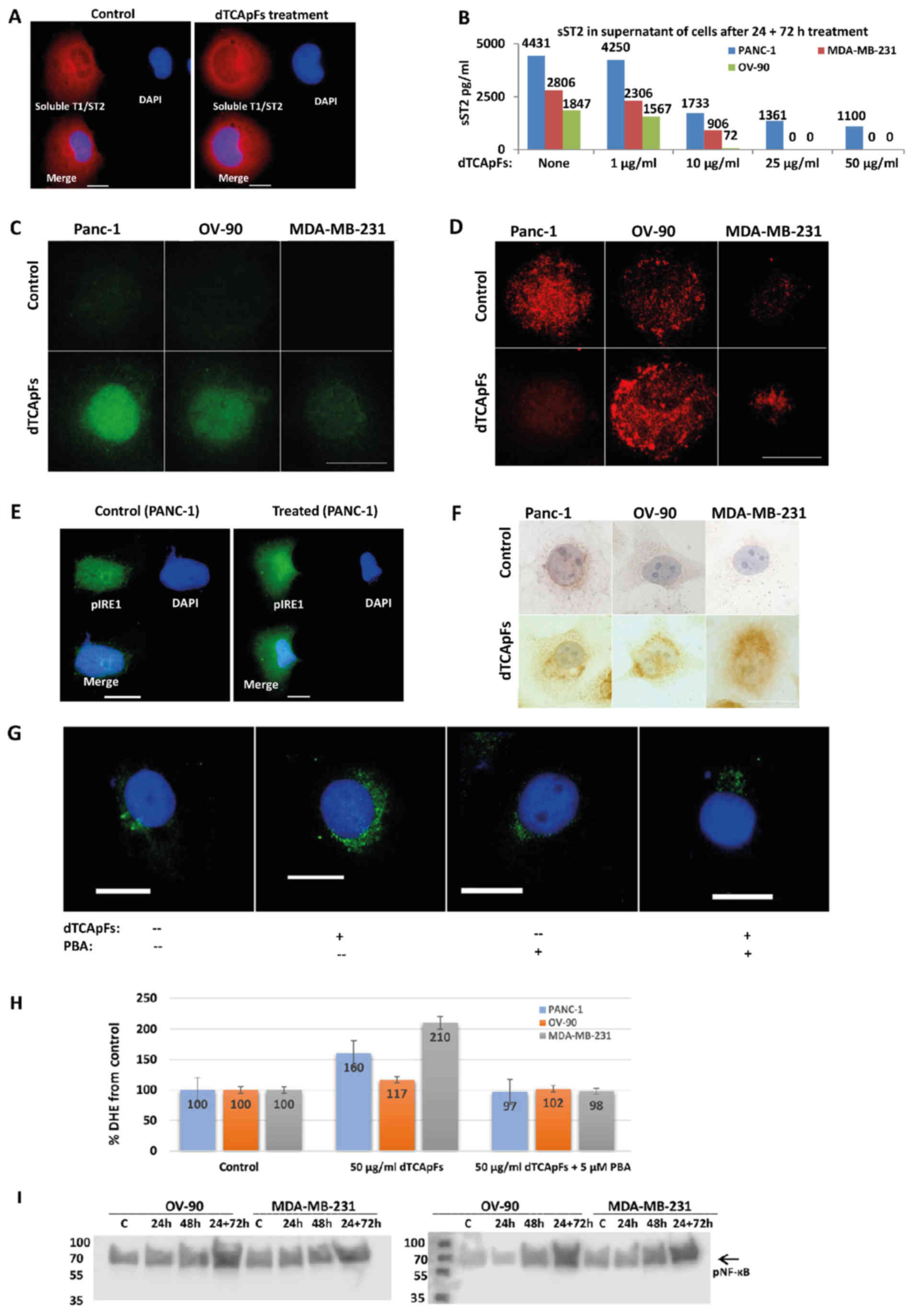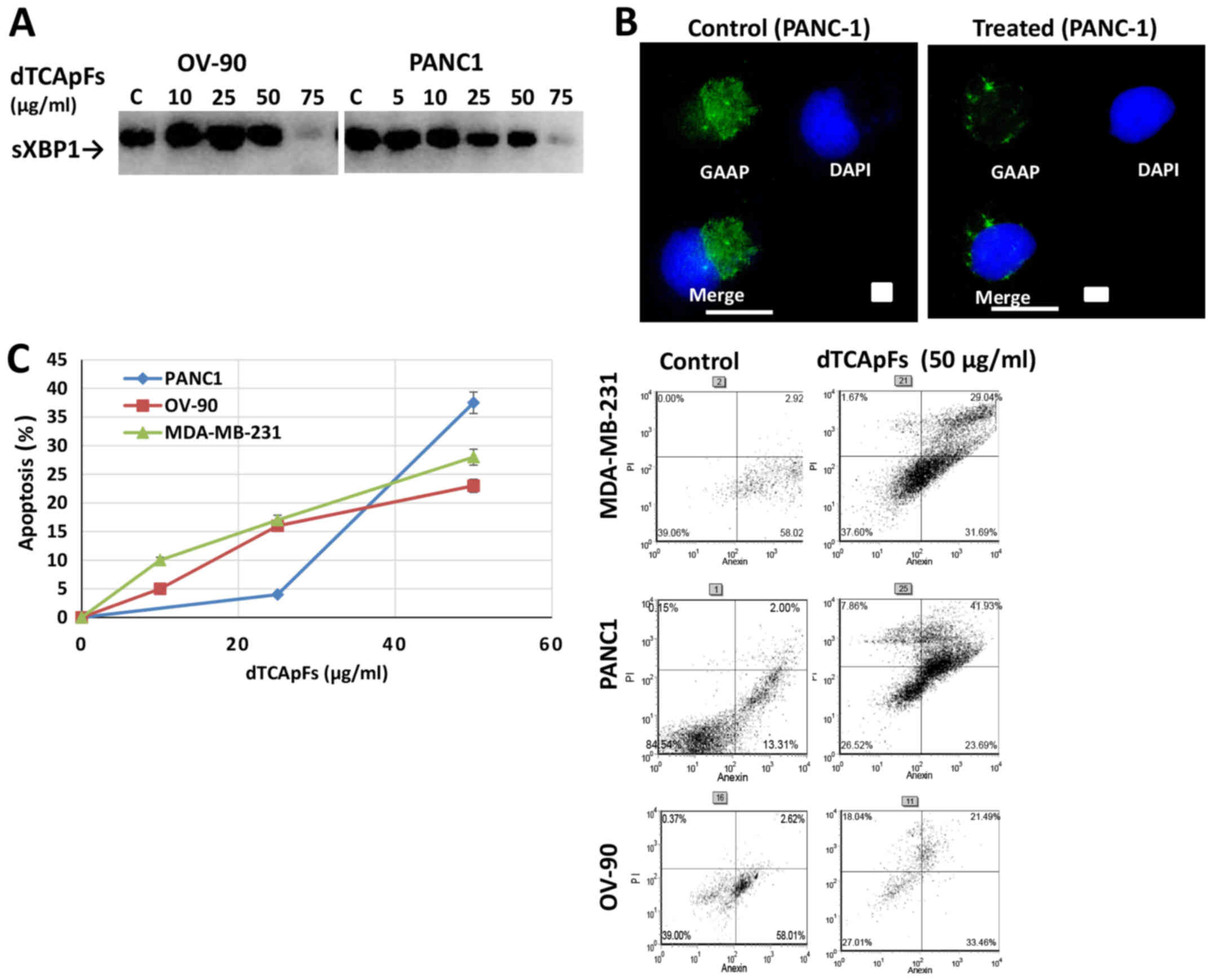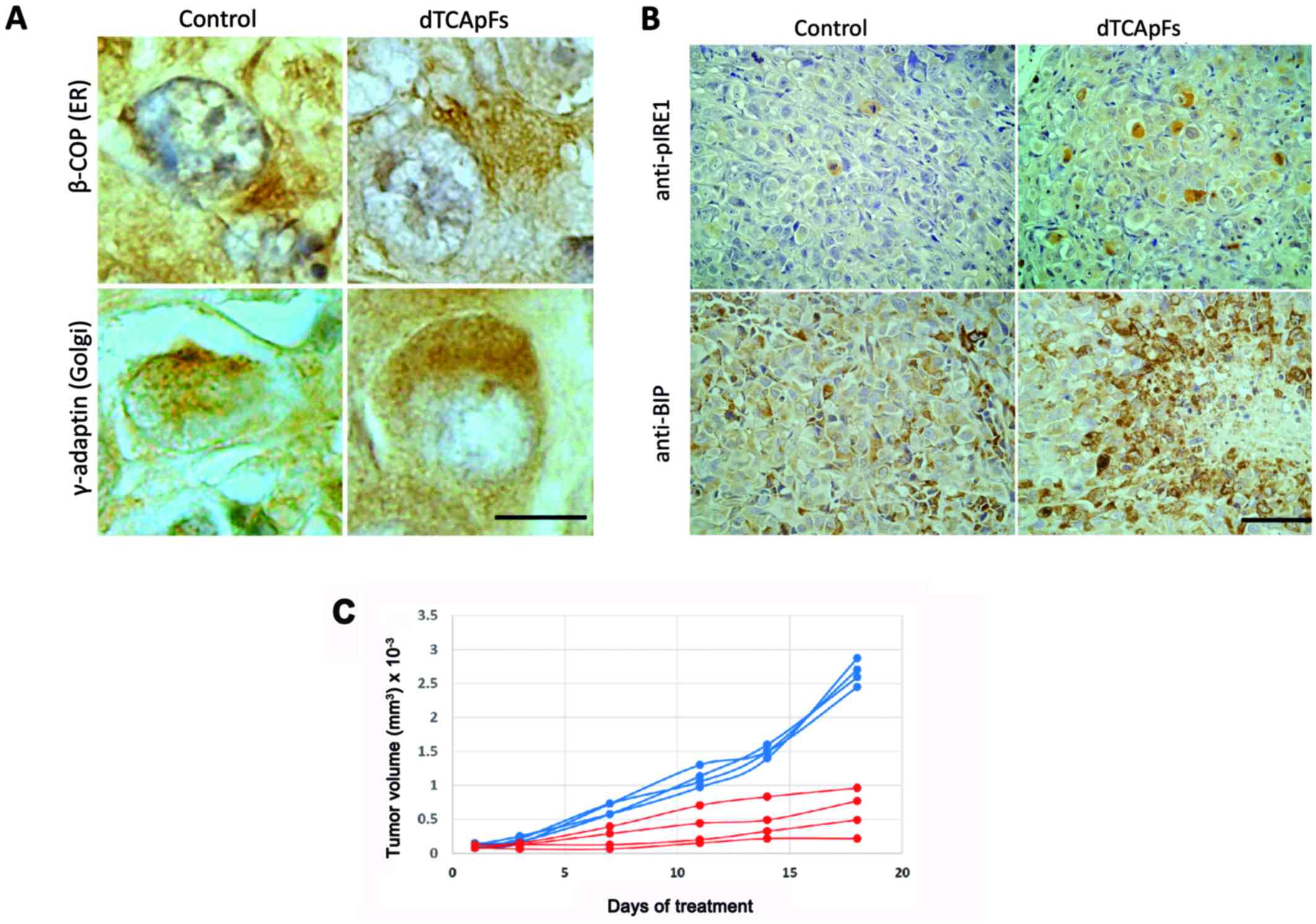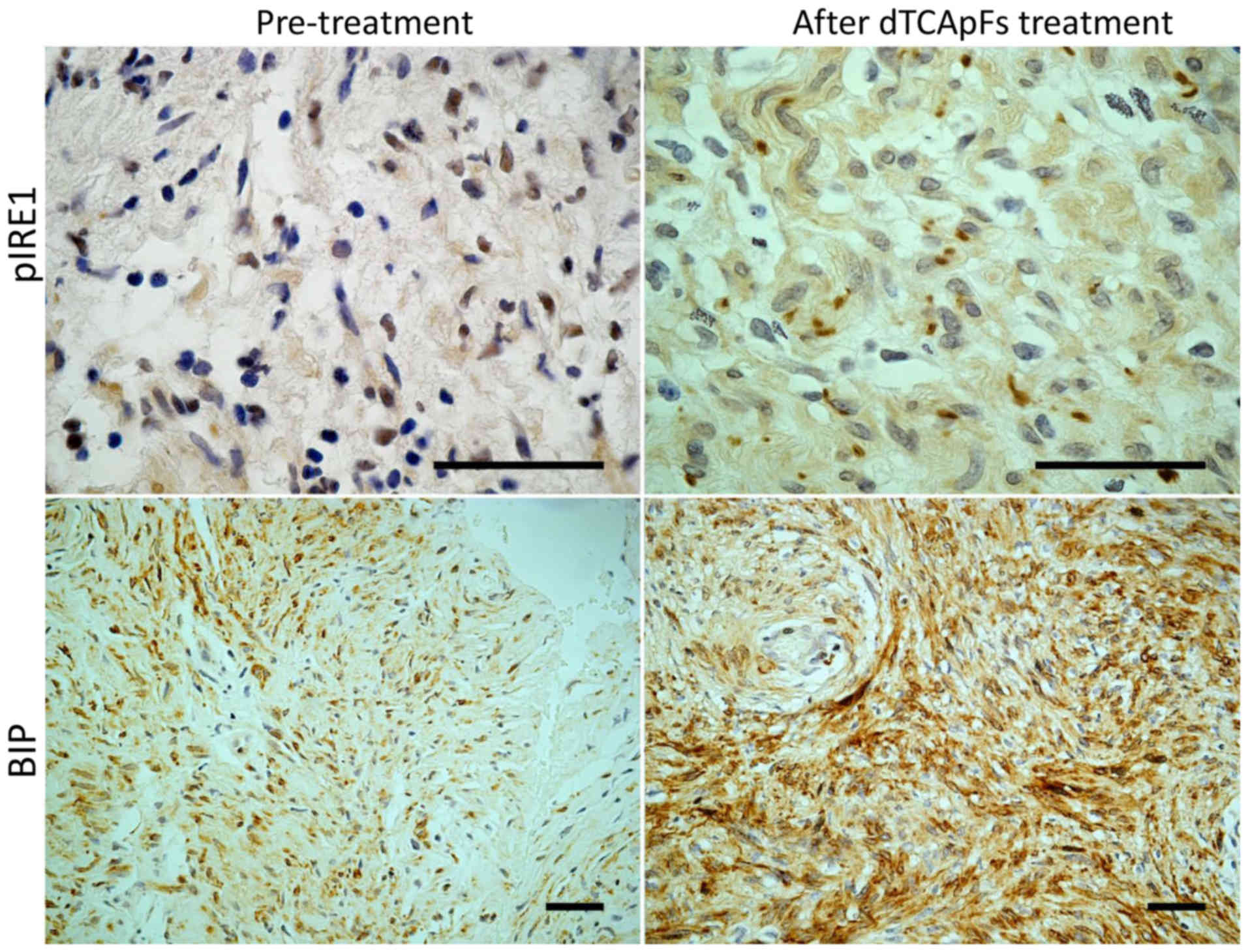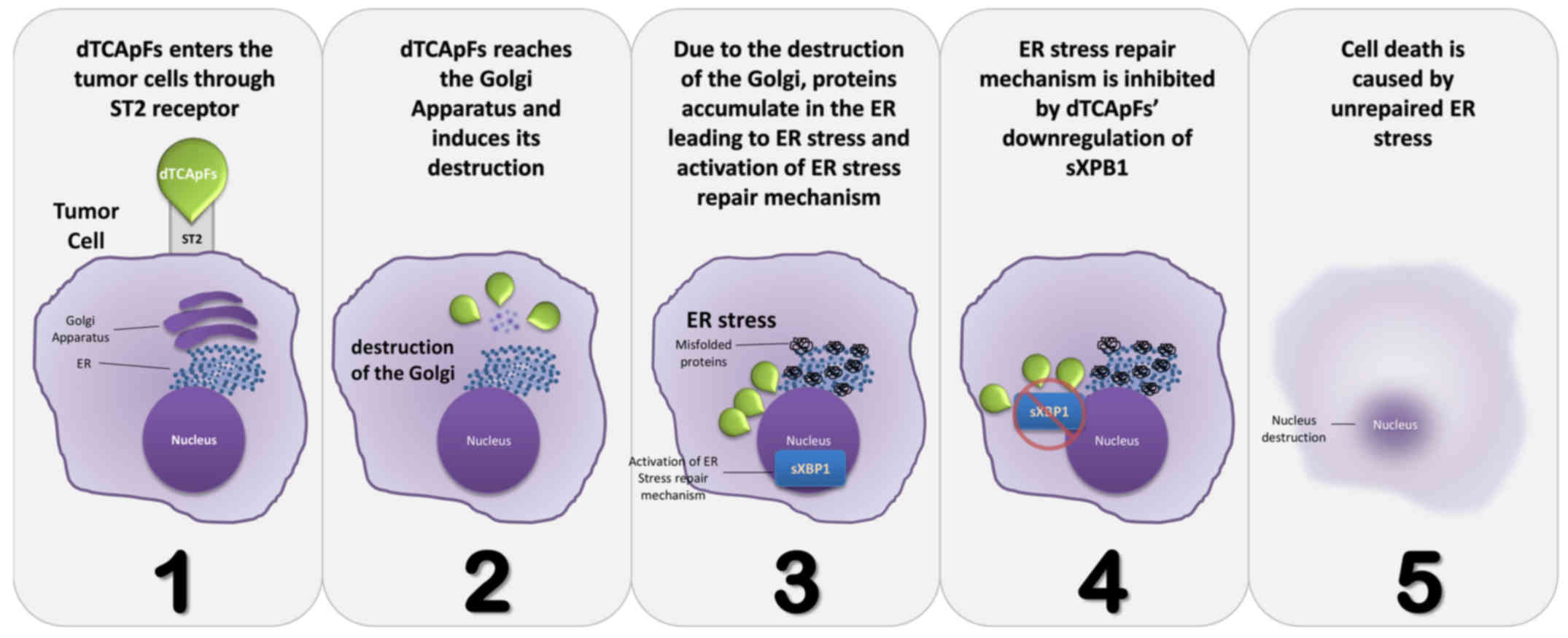dTCApFs, a derivative of a novel human hormone peptide, induces apoptosis in cancer cells through a mechanism involving loss of Golgi function
- Authors:
- Published online on: October 17, 2017 https://doi.org/10.3892/mco.2017.1453
- Pages: 991-999
-
Copyright: © Ohana et al. This is an open access article distributed under the terms of Creative Commons Attribution License.
Metrics: Total
Views: 0 (Spandidos Publications: | PMC Statistics: )
Total PDF Downloads: 0 (Spandidos Publications: | PMC Statistics: )
Abstract
dTCApFs (Nerofe™) is a 14‑amino acid derivative of a longer hormone peptide, tumor‑cells apoptosis factor (TCApF), which enters the cells through the T1/ST2 receptor. In the present study, the mechanism of action (MOA) of dTCApFs as an anticancer agent was investigated. Experiments were performed in pancreatic cancer cell lines, and immunofluorescent staining demonstrated that dTCApFs is located in the Golgi apparatus of treated cells. It was also demonstrated in pancreatic, breast and ovarian cell lines that dTCApFs treatment led to Golgi structural changes, loss of Golgi function, and molecular effects associated with endoplasmic reticulum (ER) stress, such as increased levels of C/EBP homologous protein, binding immunoglobulin protein (BiP), phosphorylated inositol‑requiring enzyme 1 (pIRE1), and increased phosphorylation of eukaryotic translation initiation factor 2α, and to the generation of reactive oxygen species, which was attenuated by ER stress inhibitors. Moreover, in these cell lines, long‑term exposure to dTCApFs led to downregulation of spliced X‑box‑binding protein 1, which is an ER stress repair mechanism gene, downregulation of the Golgi anti‑apoptotic protein, and reduced cell viability. In vivo studies using murine xenograft models of human pancreatic cancer verified the cell culture findings by demonstrating structural changes in the ER/Golgi and increased levels of pIRE1and BiP in dTCApFs‑treated mice vs. the controls. Finally, human tissue samples from a patient who received dTCApFs for 11 months in a clinical trial were analyzed, and an increase was observed in the number of cells expressing pIRE1 and BiP post‑treatment. In conclusion, we herein report a novel MOA for an anticancer agent involving triggering of apoptosis through induction of opposite effects: ER stress and downregulation of the ER stress repair mechanism. These findings provide the framework for the clinical evaluation of dTCApFs.




